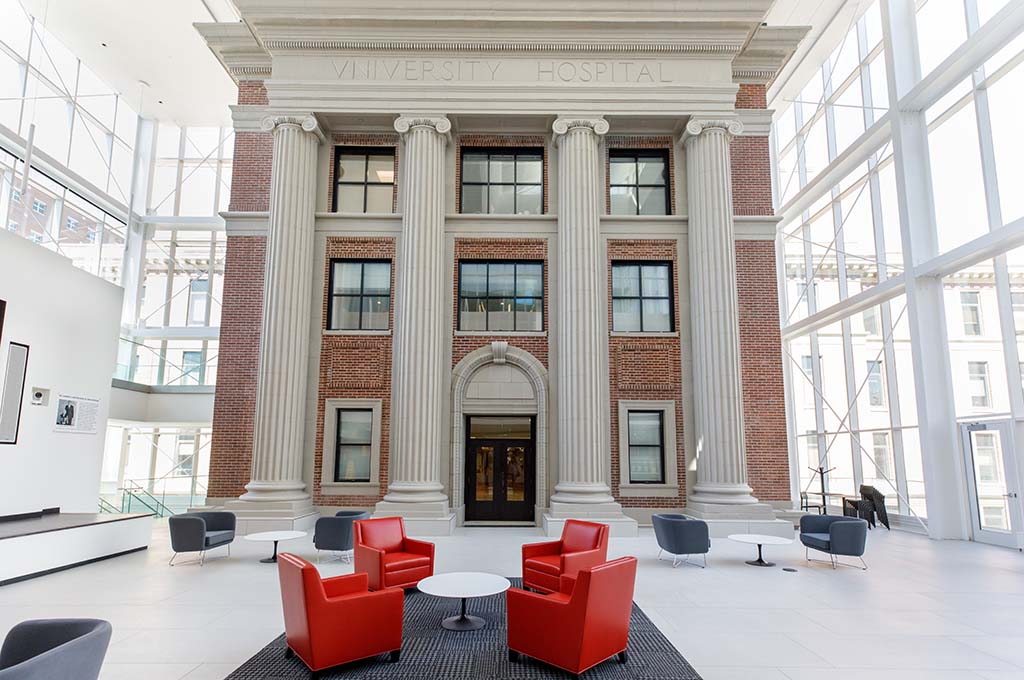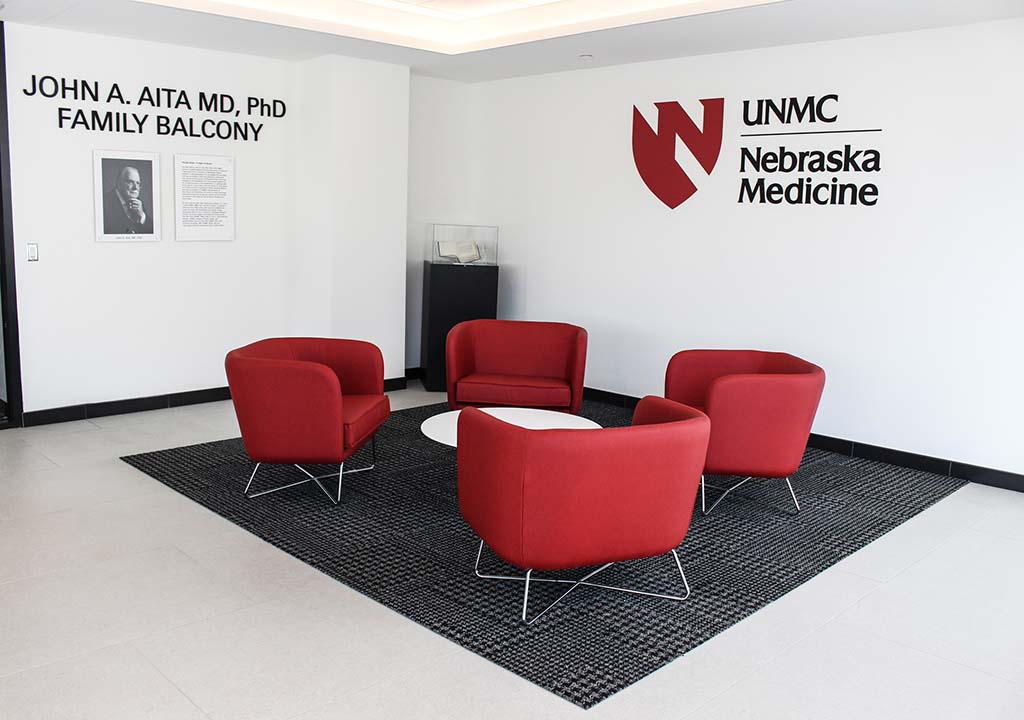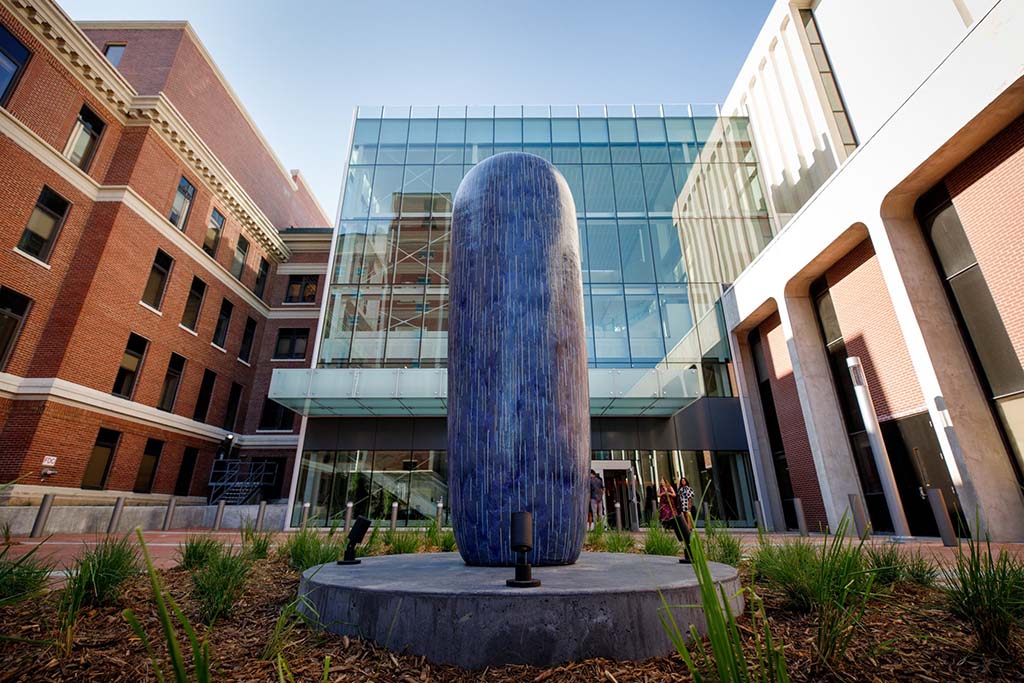Spaces
Dr. Dennis and Ann Ross Lobby

Dr. Leland J. and Dorothy H. Olson Atrium

John A. Aita, M.D. Family Balcony

William H. Northwall, M.D. Plaza

This beautifully manicured space is the ideal setting for conversations, fellowship, and engagement. The highlight of the plaza is Convergence, a sculpture by the Jenny Sabin Studio. Dr. Northwall is a 1967 alumnus of the College of Medicine.
Jenny Sabin Studio
Convergence, 2021
Dichroic film, polycarbonate, monocoque mesh, PTFE fibers
Purchased in accordance with Nebraska’s 1% for Art Program
Convergence is a process or state of coming together, where flows and currents meet and evolve together in a shared environment. The sculpture Convergence serves as the outdoor threshold to the campus welcome center, facilitating an ideal setting for conversations, fellowship and engagement by students and faculty. Using the most advanced methods and innovations in digital and robotic fabrication and integration of timeless and contextually sensitive materials that interact with the sun and human perception, Convergence is at once inspirational and forward-looking. Convergence celebrates the thriving, vibrant, and rich heritage of excellence of the University of Nebraska Medical Center through materialized concepts that embed change, transformation, and contemplation. Convergence celebrates people coming together from around the world.
Exhibits
The Wigton Heritage Center features three floors of exhibits in the adjacent Wittson Hall. Through these exhibits. McGoogan Health Sciences Library’s special collections come alive to educate, engage, and enlighten visitors on topics such as prominent women in medicine, a dental office from the 1880s, alumni contributions, and internationally recognized departments. Visitors can view artifacts, rare books, and hear oral histories. Special galleries include the UNMC History Gallery on Level 3 of Wittson Hall, the Stanton D. Harn, Ph.D., Dental Gallery on Level 4 of Wittson Hall, and the American College of Surgeons Rare Book Gallery on Level 5 of Wittson Hall.
South Plaza

The main entrance of the Wigton Heritage Center features a sculpture by Jun Kaneko.
Jun Kaneko
Dango, 2017
Jun Kaneko is an internationally renowned artist who is highly respected in both the contemporary art and ceramic fields. Born in Nagoya, Japan in 1942, Kaneko came to the United States in 1963 and became drawn to sculptural ceramics. He has lived and worked in Omaha, Nebraska since 1986. Known for his large-scale hand-built clay sculptures that challenge the limits of ceramics, Kaneko’s approach to art is an adventure in scale. His Dango is a simple form (dango is the Japanese word for dumpling). The soft, edgeless shape of this monolith gives it a human, approachable quality. The painterly handling of the surface with its layers of blue glaze becomes a canvas in the round, capturing Kaneko’s attraction to intuitive patterning and astonishing colors.